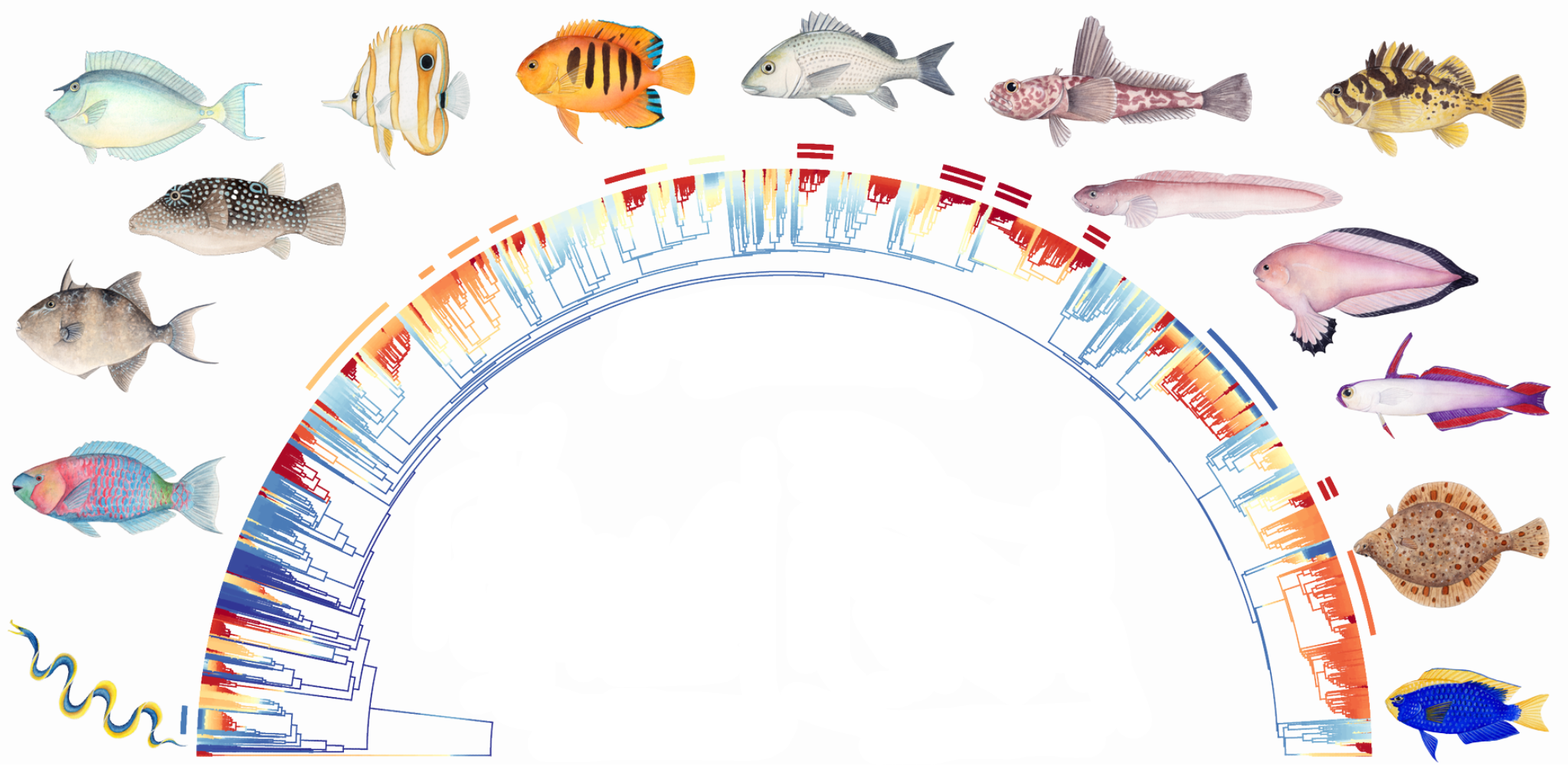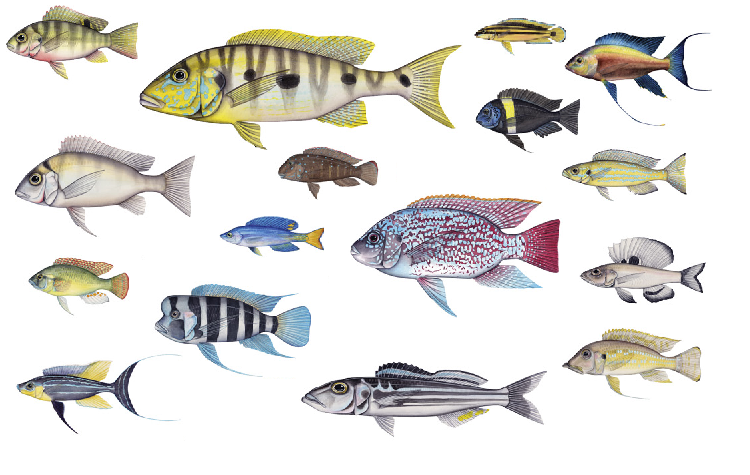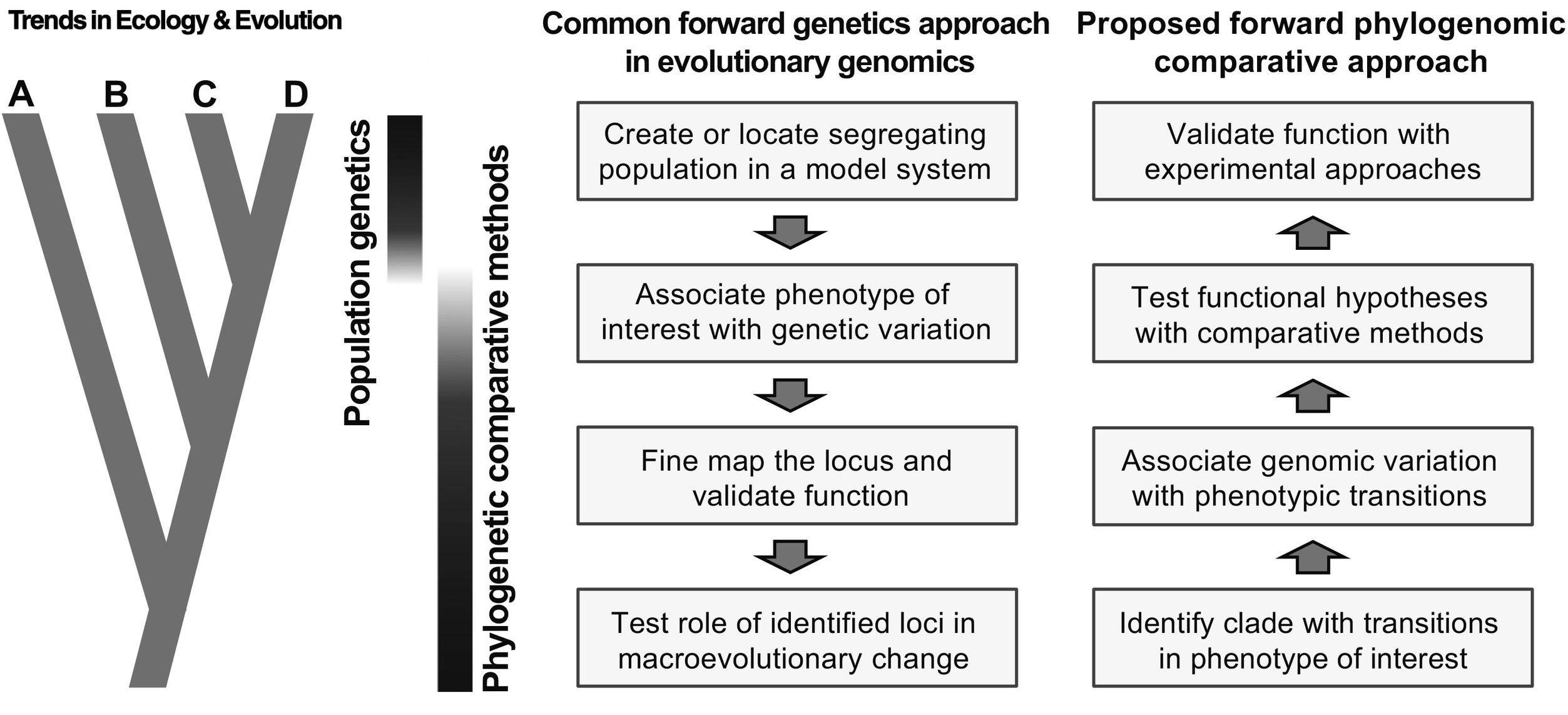My Research
In a nutshell...
I study the evolution of teleost fishes, the largest and most diverse group of vertebrates, which make up about half of all living vertebrates and dominate marine environments. My research focuses on understanding how these fish evolved by investigating the genetic mechanisms that have allowed them to adapt to different environments. By combining advanced genetic techniques with macroevolutionary analysis, I aim to uncover the key traits that have helped teleosts thrive, from ancient to recent adaptive radiations.

Advancing the Fish Tree of Life Using a Multiscale Phylogenomic Approach
Our understanding of the Fish Tree of Life, particularly the basal phylogenetic relationships among major teleost fishes, has advanced significantly in recent years due to large-scale molecular phylogenetic analyses. Despite this progress, the precise phylogenetic relationships among many key teleost lineages remain unresolved, limiting our ability to fully understand how morphological, trophic, physiological, and behavioral adaptations have driven their diversification. Using a multiscale phylogenomic approach, I aim to clarify these relationships and provide deeper insights into the evolutionary history of this diverse group. Figure adapted from fishtreeoflife.org.

Evolutionary Determinism and Convergent Evolution: Linking Habitat Transitions and Body Plan Diversification in Marine Fishes
A key question in biology is whether evolution follows predictable patterns or if they are contingent on unpredictable historical events, such as environmental catastrophes. One way to explore this is through evolutionary convergence, where natural selection leads to similar solutions in response to similar challenges. In fish, this can be seen in how populations like sticklebacks and cichlids evolve into either slim-bodied or deep-bodied forms depending on their habitat preference along the water column gradient. My research has shown that similar evolutionary constraints appear even at deeper levels of evolution, reinforcing the idea that evolution along the water column gradient is largely deterministic. Figure adapted from Ronco et al. (2020).

Phylogenetic Genotype-to-Phenotype (PhyloG2P) Assessments of Complex Traits Evolution
The PhyloG2P program was developed to tackle the challenges of studying the genetic basis of traits with deep evolutionary origins, especially in species unsuitable for traditional GWAS methods. It identifies genetic variants responsible for trait differences across species, offering a way to uncover new mechanisms of trait evolution and understand complex traits on a macroevolutionary scale. I have used this approach to generate insights into the ecological and functional drivers and the genomic basis of axial skeleton evolution in one of the most remarkable examples of adaptive radiation—the cichlid fishes of Lake Tanganyika. I have identified clusters of highly associated SNPs shared among distantly related lineages, which have undergone bursts of evolution in their axial skeletons, helping them adapt to new environments, and eventually leading to remarkable instances of convergent evolution. Figure adapted from Smith et al. (2020).